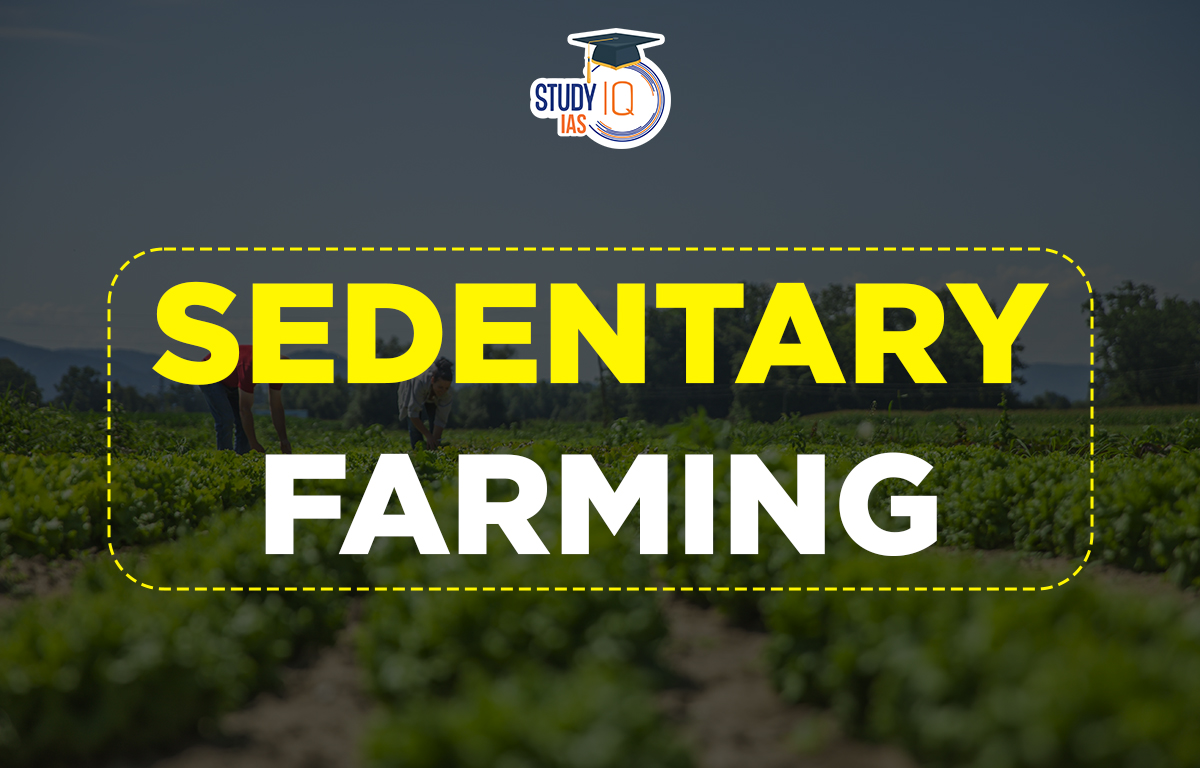Table of Contents
Sedentary Farming
Sedentary agriculture refers to farming that takes place in a single land by a settled farmer without rotating or shifting the fields. Unlike shifting cultivation, the term “sedentary farming” refers to early farmers in tropical Africa who worked the same piece of land for a long time. Sedentary farming is a more developed way of growing food in tropical lowlands. People live on the land and rely on farming for their livelihoods. This type of farming is often called sedentary subsistence agriculture. Farmers stay permanently on the land and keep using it over and over again.
Read More: Intensive Farming
Sedentary Farming Nature & Method of Cultivation
Many indigenous people in tropical areas practice this type of farming. It is better than shifting farming and has become more modern recently. They now use farm machinery, fertilizers, and high-yield seeds to grow more crops.
Read More: Subsistence Farming
Sedentary Farming Areas of Practice
Sedentary farming is common in tropical regions where farmers stay in one place and reuse fallow land. It is practiced in small patches in hot and humid lowlands, hot-dry lowlands, and subtropical plateaus and highlands. This method is used in tropical Africa, Central America, and tropical South America. Unlike shifting cultivation, crop rotation in sedentary farming takes better care of the soil and crops.
This type of farming is found in many parts of Africa, like the Savanna region (where the Masai and Huasa people now practice it), the Amazon basin in South America, and some parts of Southeast Asia.
Read More: Extensive Farming
Sedentary Farming Examples of Crops Grown
A wide variety of crops are grown. The land is engaged in producing a variety of staple foods, such as maize, sorghums, manioc, yams, peanut, sugarcane, cotton, millets, and other crops; rice and wheat are also grown in some places. The main food crops of Latin America and Africa are maize, cassava, millet, and rice. Wheat is also grown in some regions; barley, potatoes, and root crops are grown in cooler highland areas in tropical regions.
Read More: Coastal Landforms
Sedentary Farming Characteristics
Sedentary cultivation is characterized by:
- Crops grown in this farming vary from place to place.
- Sedentary farming employs a large population of the world.
- It is a type of subsistence agriculture;
- Crop production differs from place to place due to the density of the population.
Read More: Types of Soil in India
Sedentary Farming Advantages
- Sedentary farming offers permanent interest in land. Hence, the land is conserved.
- Farmers get permanent benefits from land.
- Soil is preserved. Hence, it restricts soil erosion.
- Sedentary agriculture facilitates agricultural research. Thus, it presents scope for agricultural development.
Read More: Monsoon in India
Sedentary Farming Disadvantages
- The demerits of sedentary agriculture are small and they differ from place to place.
- In sedentary farming, sometimes, soil exhaustion poses problems. It can be overcome by introducing crop rotation and using fertilizers.
Read More: Natural Vegetation of India
Sedentary Farming UPSC
An agricultural method known as sedentary agriculture involves working the same piece of ground every year. Agriculture is practised in a single location. It is the most basic kind of agriculture. The soil loses nutrients as a result of inactive farming. More cattle, including cows and buffalo, are kept by the farmer. Domesticated animals are utilised for milk production, meat production, and draught. Crops are typically planted during the cool season, grow during the wet season, and are harvested during the dry season.
In this sort of agricultural system, crops like maize, millets, paddy, vegetables, sweet potatoes, root crops, bananas, tapioca, squash, tobacco, small millets, and pulses are grown. In the off-season, many sedentary farmers in South America and Southeast Asia find work in plantations and make frequent trips back to their houses with their earnings. Subsistence sedentary farming is frequently linked with the growth of commercial crops or the gathering and selling of forest products in Southeast Asia and West Africa.


 Story of Meera Bai and Her Devotion For ...
Story of Meera Bai and Her Devotion For ...
 Desert Climate, Distribution, Climatic C...
Desert Climate, Distribution, Climatic C...
 Deserts of India Map, Features of Thar D...
Deserts of India Map, Features of Thar D...





















